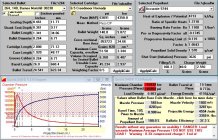It's interesting how most everyone is telling this new guy about all the tools he needs (me included). But in thinking back, I shot NRA High-Power seriously for 10 years in the 80's & 90's, without most of the stuff that is now "required". I'm not sure a lot of it was even available back then. I loaded my 308 and 30-06 rounds with the "max" loads from the Sierra manual, at their prescribed OAL. I always used Fed 210M primers and for 308 used mostly H380 (I got a deal on a big bunch of surplus WC852) and 2520. For 30-06, which later I shot most long-range, was H4350, but early on across-the-course was 4895 and 4064.
I set my sizing dies up like RCBS told you to, used an RCBS beam scale (with no standard) and an RCBS Uni-flow powder measure and I threw every charge. I did buy a gauge from Sinclair to measure the max case length, a Wilson "case-length" gauge, both for my 308 and another Sinclair gauge to measure "to-the-lands" for long-range ammo. But really, other than that I just loaded, shot an ultimately earned and NRA Master classification, all with two M70 Winchester Match rifles.
Today I only shoot off a bench (our club has a G-class, same as F-class, but shot from a bench) and I have all of the tools discussed and more and I use them religiously. Do they make a difference - yes, I am sure they do. But at 67 it's becoming harder to tell the short comings of the rifle from those of the shooter.
My point is - I think on this forum we over complicate reloading, for beginners. Which is understandable because this is the premier source for accuracy/precision information on the web. So it's kind of like a college freshman being put in a class for doctoral candidates.











